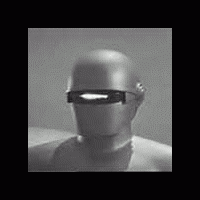讯息: 18
语言: English
funfundzvanzig (显示个人资料) 2013年5月2日上午5:00:18
For example:
This is what I got when I found out about Esperanto vowels (followed by International Phonetic Alphabet )
A in Esperanto should be like [ ä ] ( Open central unrounded vowel ) whereas in Vietnam people often say it like [ a ] ( Open front unrounded vowel ) and I think British people might say it like [ ɑ ] ( Open back unrounded vowel ). They are slightly different, I suppose.
E in Esperanto should be like [ e ] ( Mid front unrounded vowel ) . I heard the same sound when my Vietnamese friends do this ( it can be heard in trên , tên , bên in my language ). On lernu, voices mainly changes it into [ ɛ ] ( Open mid front unrounded vowel ) which means English speakers tend to be more open in mouth ( it can be heard in set, net, wet in British Accent ).This led to some arguments in my Esperanto class in Vietnam when my teacher pronounces [ e ] whereas most of my English friends do [ ɛ ] and also on lernu, of course.
O in Esperanto should be like [ o ] ( Mid back rounded vowel ). I also heard this in tô, bô, cô in my language but English speakers do differently. They make [ ɔ ] ( Open-mid back rounded vowel ) instead. Once again, English tends to be more open.
I in Esperanto should be pronounced like [ i ] ( Close front unrounded vowel )
U in Esperanto should be pronounced like [ u ] ( Close back rounded vowel ).
What does Zamenhof say about this matter? I need some suggestions from some linguists here!!!
Fenris_kcf (显示个人资料) 2013年5月2日上午9:14:53
The pronunciation in Esperanto is pretty straight. There are outlines how to pronounce which symbol, but also permissions to vary a little if it doesn't cause misunderstandings. For example it is allowed to pronounce "ng" as [ŋ]. Take a look at the detailed grammar here on lernu!
PS: Why did you decide to post this question in the English subforum?
Kirilo81 (显示个人资料) 2013年5月2日上午11:03:25
Fenris_kcf:For example it is allowed to pronounce "ng" as [ŋ].Little correction: It is allowed to pronounce ng as [ŋg], mere [ŋ] would be wrong.
funfundzvanzig (显示个人资料) 2013年5月2日上午11:47:07
Fenris_kcf:Taking the pronunciation of English as a reference for phonology is quite a bad idea. English has ~20 vowels and 6 symbols that map to a vowel — but totally not bijective.I am just a beginner. With this kind of topic, I could not explain by Esperanto.
The pronunciation in Esperanto is pretty straight. There are outlines how to pronounce which symbol, but also permissions to vary a little if it doesn't cause misunderstandings. For example it is allowed to pronounce "ng" as [ŋ]. Take a look at the detailed grammar here on lernu!
PS: Why did you decide to post this question in the English subforum?
I did find it by International Phonetic Alphabet which has sounds from many languages, not only English.
Things that concerned me is " E " and " O " .
John C.Wells ( the author of Esperanto Dictionary ) says E and O are both open-mid ( like " set " and " bought " ) while another sources on wikipedia, it says E and O are both mid ( sounds rather similar when we say " cake " and " no " . Compared with IPA, if open-mid, they're like [ ɛ ] and [ ɔ ]. If mid, they're like [ e ] and [ o ].
I don't know if there are many systems around the world but on lernu, the outlines also show them as open-mid sound but still seen as [ e ] and [ o ].
erinja (显示个人资料) 2013年5月2日下午2:05:57
Zamenhof wasn't a linguist and never defined IPA symbols for Esperanto sounds. It is unlikely that he even knew about the IPA phonetic alphabet, considering that it wasn't created until 1886 (only a year before Esperanto was published in 1887, and Zamenhof had been working on the language for years before publishing it).
Zamenhof's pronunciation guide used sounds from other languages as examples of how to pronounce Esperanto letters. These suggested pronunciations can be somewhat contradictory between languages, and in cases when more than one pronunciation exists in a language (think US/British English for example), it's hard to say exactly what he meant.
I wouldn't worry about which is the perfect IPA symbol for each Esperanto letter. So long as you are pronouncing the letter so that it cannot possibly misunderstood as another Esperanto letter, it's usually considered ok. In this sense it truly does not matter whether E and O are open-mid or mid. Zamenhof never defined it, and there is no possibility of misunderstanding those letters for another letter (regardless of pronouncing them mid or open-mid), so there's no problem.
sudanglo (显示个人资料) 2013年5月2日下午10:13:23
it says E and O are both mid ( sounds rather similar when we say " cake " and " no "Who is the we here? My pronunciation of the vowel sounds in the English words cake and no, both being diphthongized, are a long way from Esperanto's E and O.
funfundzvanzig (显示个人资料) 2013年5月3日上午12:14:41
sudanglo:I missed a bit of explanation. If E and O are both mid, they sound rather similar when we say " cake " and " no " without being diphthongized. [ keɪk ] => [ kek ], [ noʊ ] => [ no ]. So, [e] and [o] here are different with those in set,bought.it says E and O are both mid ( sounds rather similar when we say " cake " and " no "Who is the we here? My pronunciation of the vowel sounds in the English words cake and no, both being diphthongized, are a long way from Esperanto's E and O.
Anyway, many sources approve E and O should be open-mid
RiotNrrd (显示个人资料) 2013年5月3日上午1:40:02
sudanglo (显示个人资料) 2013年5月3日下午1:07:57
After the congress I'll see if can post a soundfile of the winner and runners-up.
funfundzvanzig (显示个人资料) 2013年5月5日上午3:07:00
erinja:Esperanto has speakers from all over the world, like someone already mentioned, so a wide variation of vowel sounds is considered correct.I agree that E always differs from O in pronouncing whether they are done open-mid or mid. And in that respect, it can not lead to misunderstanding in communicating. I just wonder about the exact pronunciation academically or a bit history of it. Since Zamenhof did not define it ( compared with IPA ), it should be rather open for every accents from around the world. It might be a good idea for every nations.
Zamenhof wasn't a linguist and never defined IPA symbols for Esperanto sounds. It is unlikely that he even knew about the IPA phonetic alphabet, considering that it wasn't created until 1886 (only a year before Esperanto was published in 1887, and Zamenhof had been working on the language for years before publishing it).
Zamenhof's pronunciation guide used sounds from other languages as examples of how to pronounce Esperanto letters. These suggested pronunciations can be somewhat contradictory between languages, and in cases when more than one pronunciation exists in a language (think US/British English for example), it's hard to say exactly what he meant.
I wouldn't worry about which is the perfect IPA symbol for each Esperanto letter. So long as you are pronouncing the letter so that it cannot possibly misunderstood as another Esperanto letter, it's usually considered ok. In this sense it truly does not matter whether E and O are open-mid or mid. Zamenhof never defined it, and there is no possibility of misunderstanding those letters for another letter (regardless of pronouncing them mid or open-mid), so there's no problem.





